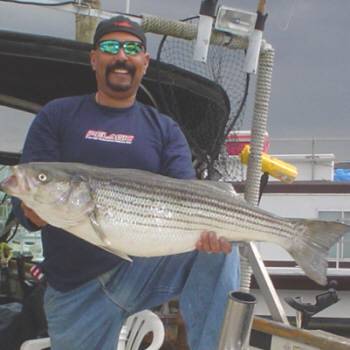|
Jamaica Bay is a large body of water and salt marsh area covering 26 miles on the south shore of Long Island. John F. Kennedy Airport borders the bay on it's eastern end, and the bay it's self separates the peninsula of the Rockaways from the main part of Long Island. The western end of the bay is open to the Atlantic Ocean at the Rockaway Inlet.
Jamaica Bay ranges in depth from 3 to 12 feet, but has been dredged for navigation and can be up to 50 feet deep in spots, but on average depth is less than 10 feet deep. Due to the shallow nature of the bay it warms very quickly in the spring and is a magnet to all species of fish and birds alike. Some of the fish you may encounter on a trip to the bay include Fluke, Stripers, Weakfish, Bluefish, Bonito, Spanish Mackerel, Tautog, Seabass, False Albacore and Skipjack Tuna.
The Striped Bass is the largest member of the sea bass family. Striped Bass can live up to 40 years and can reach weights greater than 100 pounds. The Striped Bass is anadromous and may ascend streams and travel as much as 100 miles inland to spawn. The native range is along the Atlantic coast east of the Appalachian Mountains from New Brunswick south to Florida. The Striped Bass is a very important sport and commercial fish throughout its range.
Striped Bass feed most actively at dusk to dawn, although some feeding occurs throughout the day. During the summer they tend to become more nocturnal feeding mostly at night. Striped Bass eat a variety of foods, including fish such as alewives, flounder, sea herring, menhaden, silver hake, smelt, sea robins, porgies, and eels. They will also feed on lobsters, crabs, soft clams, small mussels, sea worms, and squid. They have a voracious appetite and will eat almost anything that moves. Stripers are particularly active with tidal and current flows and in the wash of breaking waves along the shore. As the surf pounds the shoreline small fish, crabs, and clams become easy prey as they are tossed about in turbulence of the breaking surf.
|







